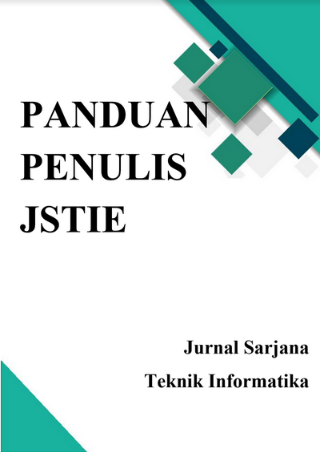Analisis dan Implementasi Usulan Perbaikan Website BIMAWA Universitas Ahmad Dahlan Dengan Metode Usability Testing dan Heuristic Evaluation
DOI:
https://doi.org/10.12928/jstie.v11i1.25815Keywords:
Usability Testing, Heuristic Evaluation, Website UI/UXAbstract
Website adalah salah satu media yang memfasilitasi dalam mencari informasi ataupun wadah memberi informasi. Dalam menyajikan informasi melalui website sangat beragam sesuai dengan informasi yang disampaikan agar informasi yang disampaikan dapat tercapai, namun ada juga beberapa website yang penyampaian isi informasi tidak memenuhi tujuan yang seharusnya disampaikan sehingga berdampak pada keluhan pengguna yang rutin mencari informasi. Penelitian ini fokus pada mengidentifikasi keluhan penggunaan mahasiswa dalam pengaksesan informasi yang dibagikan di website milik Biro Kemahasiswaan dan Alumni Universitas Ahmad Dahlan(BIMAWA UAD), serta mengevaluasi perbaikan yang diwujudkan dalam desain antarmuka usulan. Metode yang digunakan dalam pengumpulan data antara lain wawancara, studi literatur, observasi, dan kuesioner. Metode yang digunakan dalam pengujian yakni dengan Usability Testing dan Heuristic Evaluation. Metode Usability Testing digunakan untuk mengidentifikasi sejauh mana sebuah produk dapat digunakan oleh pengguna untuk mencapai tujuan secara efektif, efisien dan memuaskan sesuai konteks penggunaannya. Pada pengujian dengan Heuristic Evaluation, evaluasi dilakukan oleh 3 orang pakar dibidang UI/UX untuk menguji kelayakan website Bimawa UAD. Hasil dari teknik usability rata-rata adalah 67,5 untuk website existing dan nilai usability rata-rata 75,3 pada website perbaikan.
References
D. Lawrence and S. Tavakol, “Website Usability,” Balanced Website Design, pp. 37–58, 2007, doi: 10.1007/978-1-84628-795-4_3.
A. Pleuss, B. Hauptmann, D. Dhungana, and G. Botterweck, “User interface engineering for software product lines - The dilemma between automation and usability,” EICS’12 - Proceedings of the 2012 ACM SIGCHI Symposium on Engineering Interactive Computing Systems, pp. 25–34, 2012, doi: 10.1145/2305484.2305491.
B. Klug, “An Overview of the System Usability Scale in Library Website and System Usability Testing,” Weave: Journal of Library User Experience, vol. 1, no. 6, Apr. 2017, doi: https://doi.org/10.3998/weave.12535642.0001.602.
“System Usability Scale (SUS) | Usability.gov.” https://www.usability.gov/how-to-and-tools/resources/templates/system-usability-scale-sus.html (accessed Oct. 20, 2017).
K. Boyd and R. Bond, “Can micro interactions in user interfaces affect their perceived usability?,” ACM International Conference Proceeding Series, Apr. 2021, doi: 10.1145/3452853.3452865.
A. Marcus, Ed., “Design, User Experience, and Usability. Theories, Methods, and Tools for Designing the User Experience,” in Third International Conference, DUXU 2014, Held as Part of the HCI International 2014, 2014, vol. 8517. doi: 10.1007/978-3-319-07668-3.
A. Momenipour, S. Rojas-Murillo, B. Murphy, P. Pennathur, and A. Pennathur, “Usability of state public health department websites for communication during a pandemic: A heuristic evaluation,” Int J Ind Ergon, vol. 86, p. 103216, Nov. 2021, doi: 10.1016/J.ERGON.2021.103216.
T. Tullis and B. Albert, “Measuring the User Experience: Collecting, Analyzing, and Presenting Usability Metrics: Second Edition,” Measuring the User Experience: Collecting, Analyzing, and Presenting Usability Metrics: Second Edition, pp. 1–301, Jul. 2013, doi: 10.1016/C2011-0-00016-9.
R. Faticha, A. Aziza, and Y. T. Hidayat, “Analisa Usability Desain User Interface Pada Website Tokopedia Menggunakan Metode Heuristics Evaluation,” Jurnal Tekno Kompak, vol. 13, no. 1, pp. 7–11, Feb. 2019, doi: 10.33365/JTK.V13I1.265.
L. Faulkner, “Beyond the five-user assumption: Benefits of increased sample sizes in usability testing,” Behavior Research Methods, Instruments, and Computers, vol. 35, no. 3, pp. 379–383, 2003, doi: 10.3758/BF03195514/METRICS.
U. Ependi, F. Panjaitan, and H. Hutrianto, “System Usability Scale Antarmuka Palembang Guide Sebagai Media Pendukung Asian Games XVIII,” Journal of Information Systems Engineering and Business Intelligence, vol. 3, no. 2, pp. 80–86, Oct. 2017, doi: 10.20473/JISEBI.3.2.80-86.
U. Ependi, T. B. Kurniawan, and F. Panjaitan, “System Usability Scale Vs Heuristic Evaluation: A Review,” Simetris: Jurnal Teknik Mesin, Elektro dan Ilmu Komputer, vol. 10, no. 1, pp. 65–74, Apr. 2019, doi: 10.24176/SIMET.V10I1.2725.
J. Nielsen and R. Molich, “Heuristic evaluation of user interfaces,” Conference on Human Factors in Computing Systems - Proceedings, pp. 249–256, Mar. 1990, doi: 10.1145/97243.97281.
A. Lecaros, A. Moquillaza, F. Falconi, J. Aguirre, A. Tapia, and F. Paz, “Selection and Modeling of a Formal Heuristic Evaluation Process Through Comparative Analysis,” Lecture Notes in Computer Science (including subseries Lecture Notes in Artificial Intelligence and Lecture Notes in Bioinformatics), vol. 13321 LNCS, pp. 28–46, 2022, doi: 10.1007/978-3-031-05897-4_3/COVER.
J. R. Lewis, “The System Usability Scale: Past, Present, and Future,” https://doi.org/10.1080/10447318.2018.1455307, vol. 34, no. 7, pp. 577–590, Jul. 2018, doi: 10.1080/10447318.2018.1455307.
P. T. Kortum and A. Bangor, “Usability Ratings for Everyday Products Measured With the System Usability Scale,” http://dx.doi.org/10.1080/10447318.2012.681221, vol. 29, no. 2, pp. 67–76, Jan. 2013, doi: 10.1080/10447318.2012.681221.
Downloads
Published
Issue
Section
License
License and Copyright Agreement
In submitting the manuscript to the journal, the authors certify that:
- They are authorized by their co-authors to enter into these arrangements.
- The work described has not been formally published before, except in the form of an abstract or as part of a published lecture, review, thesis, or overlay journal. Please also carefully read Journal Posting Your Article Policy.
- The work is not under consideration for publication elsewhere.
- The work has been approved by all the author(s) and by the responsible authorities – tacitly or explicitly – of the institutes where the work has been carried out.
- They secure the right to reproduce any material that has already been published or copyrighted elsewhere.
- They agree to the following license and copyright agreement.
Copyright
Authors who publish with Jurnal Sarjana Teknik Informatika agree to the following terms:
- Authors retain copyright and grant the journal right of first publication with the work simultaneously licensed under a Creative Commons Attribution License (CC BY-SA 4.0) that allows others to share the work with an acknowledgement of the work's authorship and initial publication in this journal.
- Authors are able to enter into separate, additional contractual arrangements for the non-exclusive distribution of the journal's published version of the work (e.g., post it to an institutional repository or publish it in a book), with an acknowledgement of its initial publication in this journal.
- Authors are permitted and encouraged to post their work online (e.g., in institutional repositories or on their website) prior to and during the submission process, as it can lead to productive exchanges, as well as earlier and greater citation of published work.








